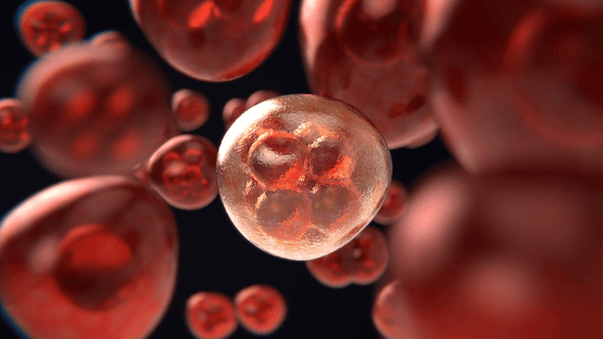Noninvasive BCI for Paralyzed Persons

Noninvasive Brain-Computer Interfacing (BCI) technology (see below) could allow paralyzed patients to control their environment or robotic limbs using their own thoughts, without needing brain implants, bringing much needed benefits to numerous patients and even potentially to the general population.
"There have been major advances in mind controlled robotic devices using brain implants. It's excellent science," said Bin He, Head of Biomedical Engineering at Carnegie Mellon University. "But noninvasive is the ultimate goal. Advances in neural decoding and the practical utility of noninvasive robotic arm control will have major implications on the eventual development of noninvasive neurorobotics."
"Despite technical challenges using noninvasive signals, we are fully committed to bringing this safe and economic technology to people who can benefit from it," continued He. "This work represents an important step in noninvasive brain-computer interfaces, a technology which someday may become a pervasive assistive technology aiding everyone, like smartphones."
Noninvasive mind-controlled robotic arm. Researchers at Carnegie Mellon University and University of Minnesota have developed a robotic device control using noninvasive external sensing, rather than brain implants. A study published in Science Robotics describes how, using a noninvasive brain-computer interface (BCI), the researchers have created the first-ever successful mind-controlled robotic arm exhibiting the ability to continuously track and follow a computer cursor. The technology has been tested in able-bodied human subjects, and clinical trials for paralyzed patients are planned.
Gradual release of curcumin stops bone cancer cell growth. Scientists at Washington State University have developed a bone cancer therapeutic system using curcumin, the main ingredient in the spice turmeric, which successfully inhibits bone cancer cells while promoting growth of healthy bone cells. As described in a research paper published in ACS Applied Materials & Interfaces, the scientists used 3D printing to build support scaffolds out of calcium phosphate and incorporated curcumin, encapsulated in a vesicle of fat molecules into the scaffolds, allowing for the gradual release of the chemical. The system inhibited the growth of osteosarcoma cells by 96 percent after 11 days as compared to untreated samples, and also promoted healthy bone cell growth.
Molecular switch triggers dysfunctional immune responses. Researchers at Technical University of Munich have identified a crucial molecular switch that inhibits immune cells, triggering dysfunctional immune responses in patients with cancer or viral infections. This could make it possible in the future to switch off or to prevent the inhibition of immune cells. In a paper published in Nature, the researchers argue that the protein Tox is the decisive molecular switch. Using mouse and cell culture models together with patient samples, the scientists found out that the protein has an effect inside the cell nucleus, where it activates a genetic program that alters immune cell function.
Advances toward 3D printed tissues and organs. Scientists at University of Illinois at Chicago have developed a process that enables 3D printing of biological tissues without scaffolds using 'ink' made up of only stem cells. A research paper published in Materials Horizons describes the new cell-only printing platform, which allows for the 3D printing of cells, without a classical scaffold support, using a temporary hydrogel bead bath in which printing takes place. The micron-scale hydrogel beads allow the nozzle of the 3D printer to move through it and deposit cells with minimal resistance to that nozzle movement or the ejection of the cells.
Total synthesis of powerful anti-cancer agent. Chemists at Harvard University have achieved the total synthesis of 11.5g of halichondrin. Known to be a potent anti-cancer agent in mouse studies, and found naturally in sea sponges (though only ever in minuscule quantities), the halichondrin class of molecule is so complex that it had never been synthesized on a meaningful scale in the lab. A study published in Scientific Reports describes the results of studies conducted in vitro and in vivo, in animal models, that shed light on the molecule's complex mode of action.
Nanoparticle sensors for early cancer detection. Researchers at Brigham and Women's Hospital are developing a nanoparticle sensor array as an early detection test for cancer and other diseases. The new sensor array, described in a research paper published in Nanoscale Horizons, has been tested on blood samples, both from people diagnosed with five different types of cancer as well as purportedly healthy people who went on to have a cancer diagnosis several years later. The nanoparticles collect a unique coating of proteins from the blood, which can be analyzed to spot early-stage cancer.
More Articles
Don't miss a beat! In our Pulse Newsletter, Thrivous curates the most important news on health science and human enhancement, so you can stay informed without wasting time on hype and trivia. It's part of the free Thrivous newsletter. Subscribe now to receive email about human enhancement, nootropics, and geroprotectors, as well as company news and deals.
Read more articles at Thrivous, the human enhancement company. You can browse recent articles in Thrivous Views. See other Pulse Newsletter articles. Or check out an article below.
-
Enhance Attention with Caffeine and L Theanine
Psychology Today describes attention as “a spotlight that focuses an individual's awareness on a particular facet of their environment, or on the ...
-
Finding and Zapping Spreading Cancer Cells
A new device called Cytophone (see below) integrates diagnostic and therapeutic capabilities, using the same laser to detect and kill ...


